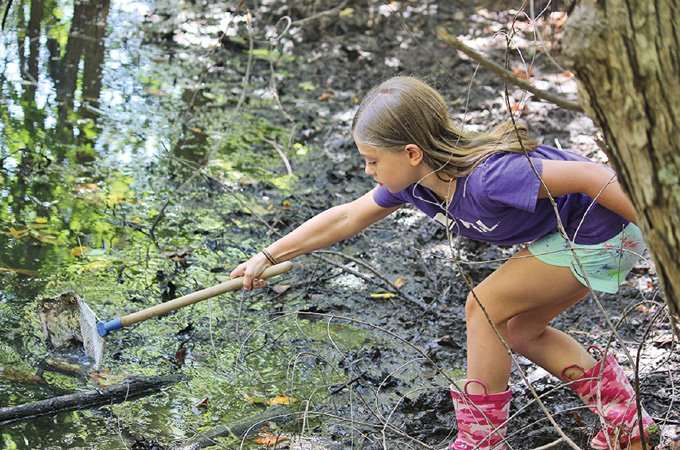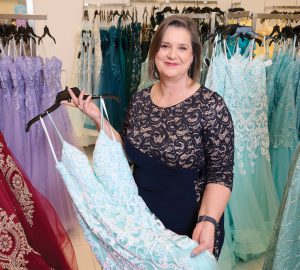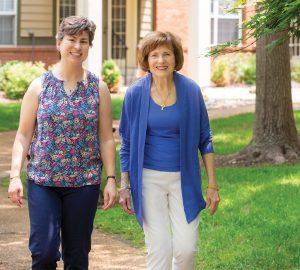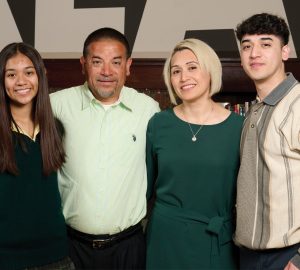Holding an insect in your hand is a much more powerful way to learn about it than looking at a picture. Seeing, touching and drawing a plant can help you understand it more fully. Community School believes that immersing yourself in how things work is the best way to retain what you learn, and it applies that hands-on approach to its entire curriculum, says head of school Bob Cooke.
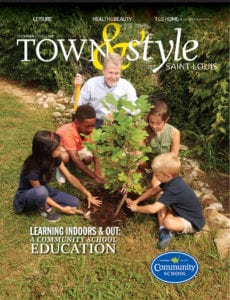 The independent school in Ladue, founded in 1914 by a group of area moms, serves students age 3 through sixth grade and teaches them to view nature as the ultimate classroom. “We are all about active, experiential learning,” Cooke says. “The school is situated on 18 acres of land with fields and woods, and there are deer, owls, hawks, rabbits and other wildlife on the property. Science classes perform pond and stream studies to learn about the life cycles of creatures like frogs, and English students spend time journaling outdoors. Our P.E. classes get exercise in the fresh air, and art students draw, paint and gather inspiration from being outside. Even our math classes have outdoor sessions.”
The independent school in Ladue, founded in 1914 by a group of area moms, serves students age 3 through sixth grade and teaches them to view nature as the ultimate classroom. “We are all about active, experiential learning,” Cooke says. “The school is situated on 18 acres of land with fields and woods, and there are deer, owls, hawks, rabbits and other wildlife on the property. Science classes perform pond and stream studies to learn about the life cycles of creatures like frogs, and English students spend time journaling outdoors. Our P.E. classes get exercise in the fresh air, and art students draw, paint and gather inspiration from being outside. Even our math classes have outdoor sessions.”
At Community School, caring about the planet becomes second nature for students. “We often hear them talking excitedly about tadpoles or bugs they found at recess,” Cooke says. “They love to spend their free time observing. Even playtime has an educational component here. We think the spirit is nurtured in every way by exposure to the outdoor world.” This year, students are actively involved in a campus program to replace invasive plant species with native ones.
Cooke says research has shown that students retain knowledge better when they learn with all of their senses and when they have unstructured time outside. This approach also helps them develop problem-solving skills and make new friends. “These days, kids are indoors so much on computers and playing video games,” Cooke notes. “We teach them about technology, of course, but free time outdoors is essential as well. Adults are supervising, but kids know they can run and play—just like childhood used to be.”
The school’s student-teacher ratio is 7:1, which means each child receives individualized attention. Need-based financial aid is available to families who qualify, and on-campus after-school and summer camp programs are popular. Since the campus is secluded and safe, parents can feel comfortable dropping off their children each day, according to Cooke.
Community School tracks its standardized test scores against those of other schools, and Cooke says the results are rewarding. “Our students tend to score higher than those at other private schools,” he notes. “That’s a testament to our educational approach. The way we teach kids allows them to achieve to the fullest.” And because the school is independent, it isn’t beholden to a school district or diocese. “We have a board of trustees and are accredited by regional and national associations, but we create our own curriculum and decide how we’ll teach it,” Cooke explains. “That puts the power in the hands of the educators, who love being here and understand the needs of our students.
Community School in Ladue was founded in 1914 to nurture the minds, bodies and spirits of students ages 3 through sixth grade. Pictured on the cover: Head of school Bob Cookie with students. For more information, call 314.991.0005 or visit communityschool.com.
Cover design by Julie Streiler | Cover photo by Tim Parker Photography
Pictured above: Community School students learn to care about the natural world.





